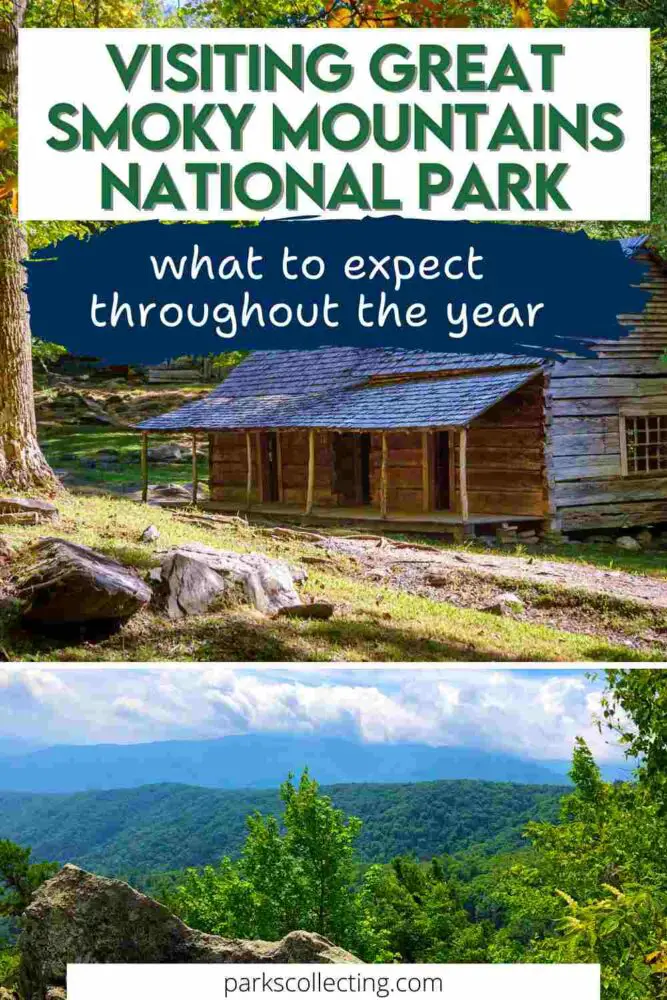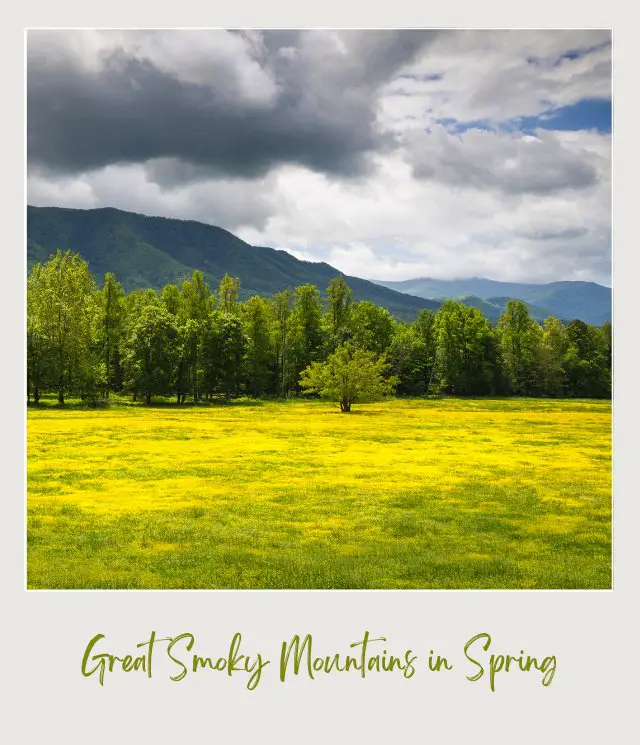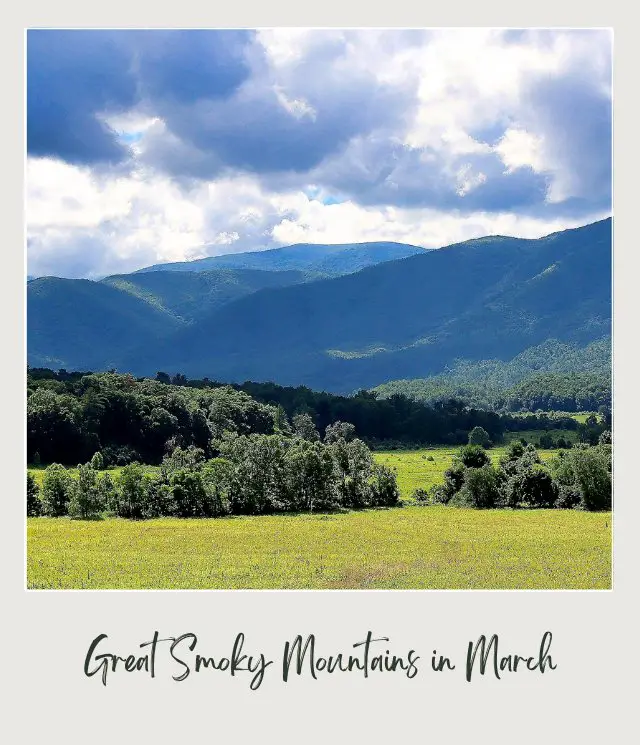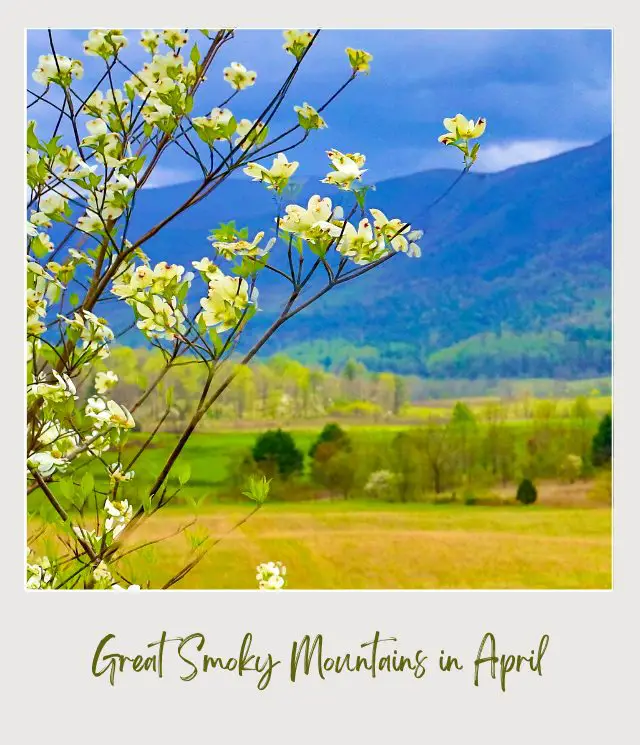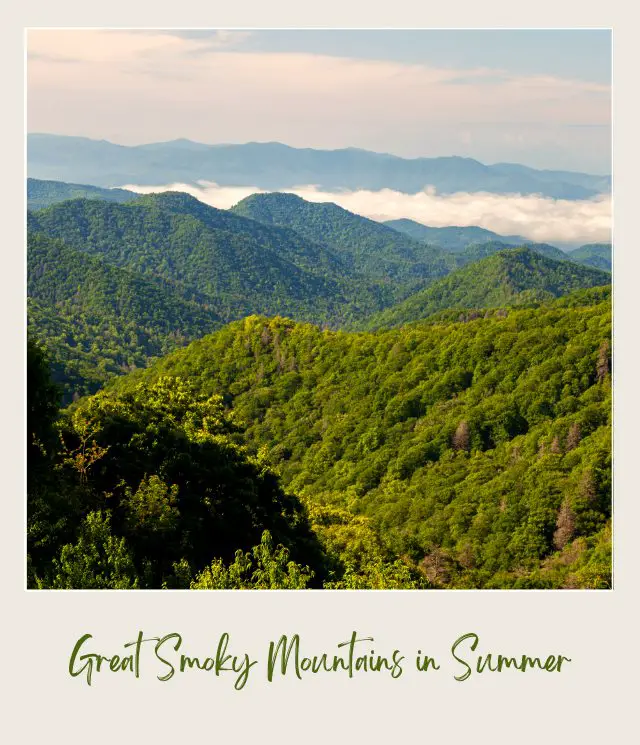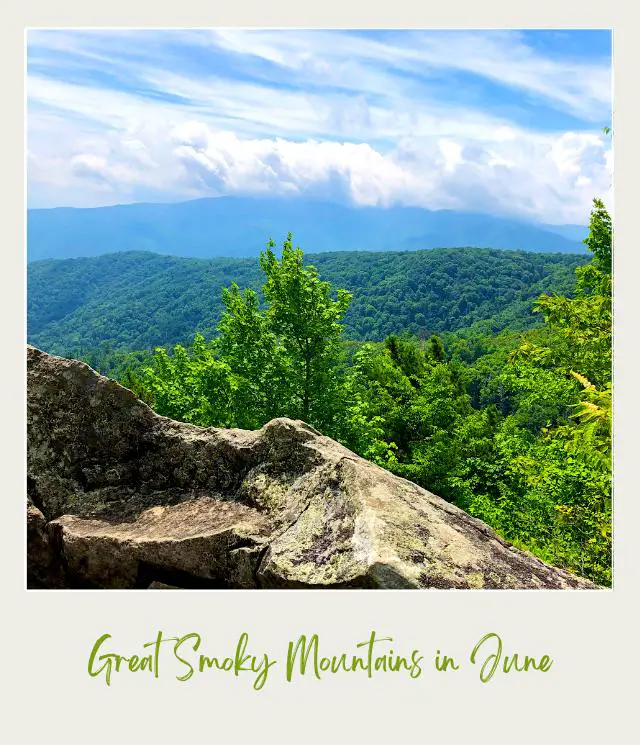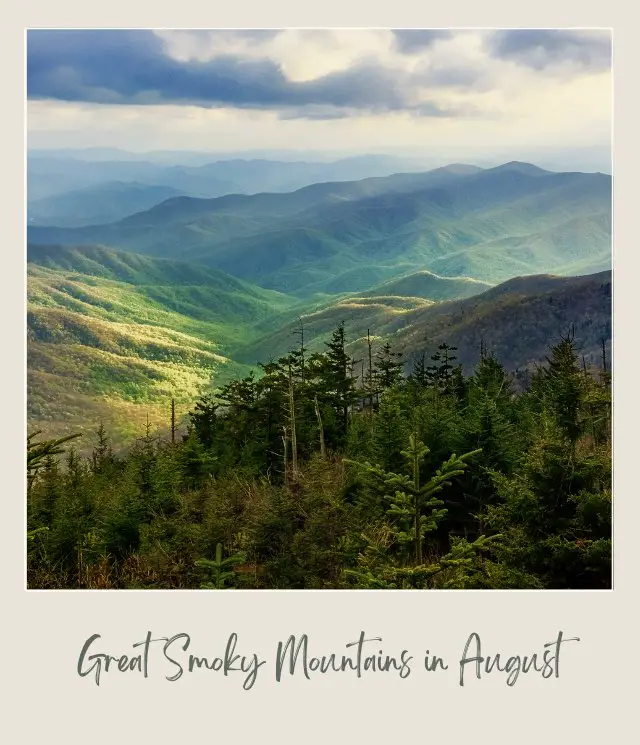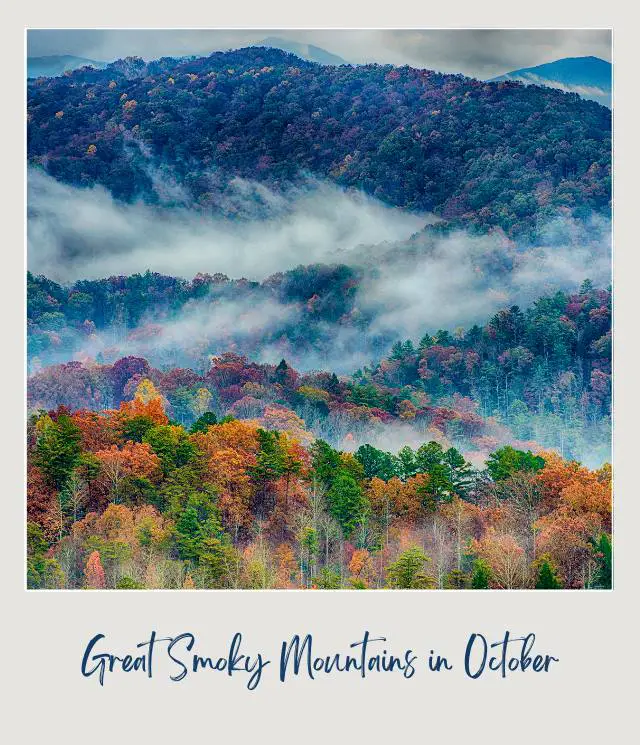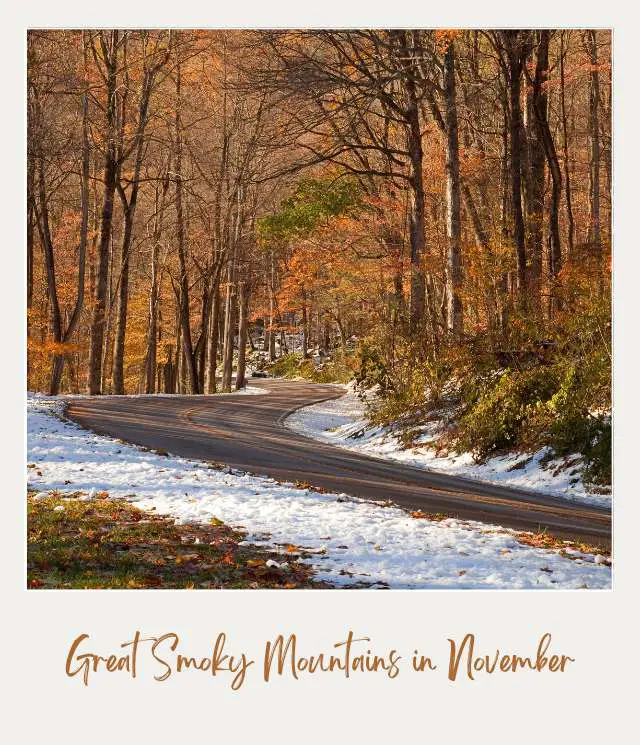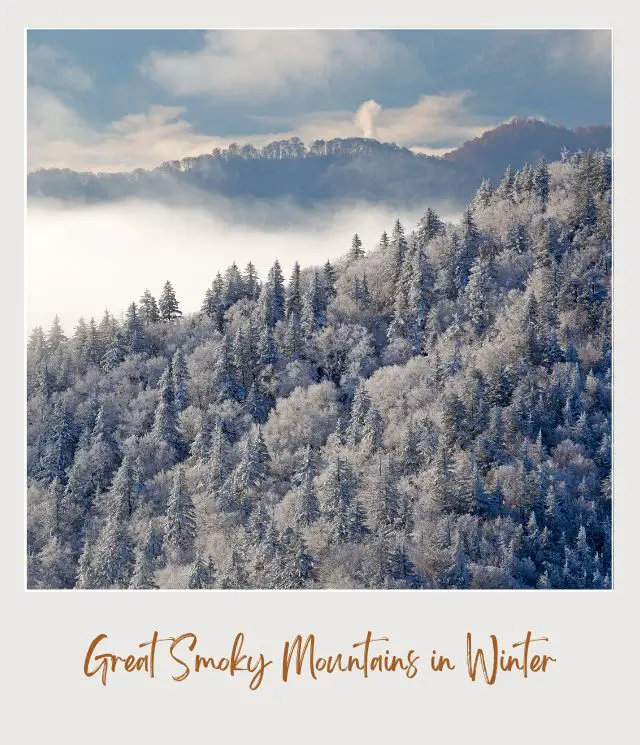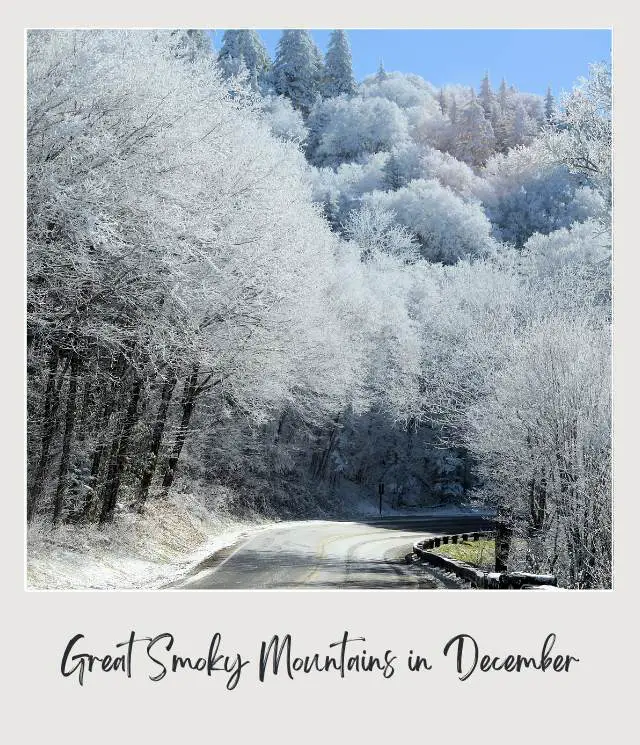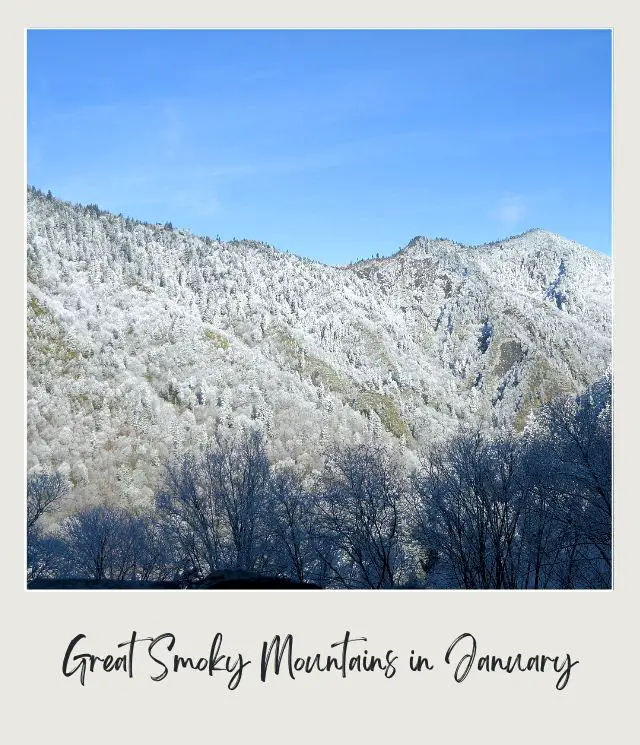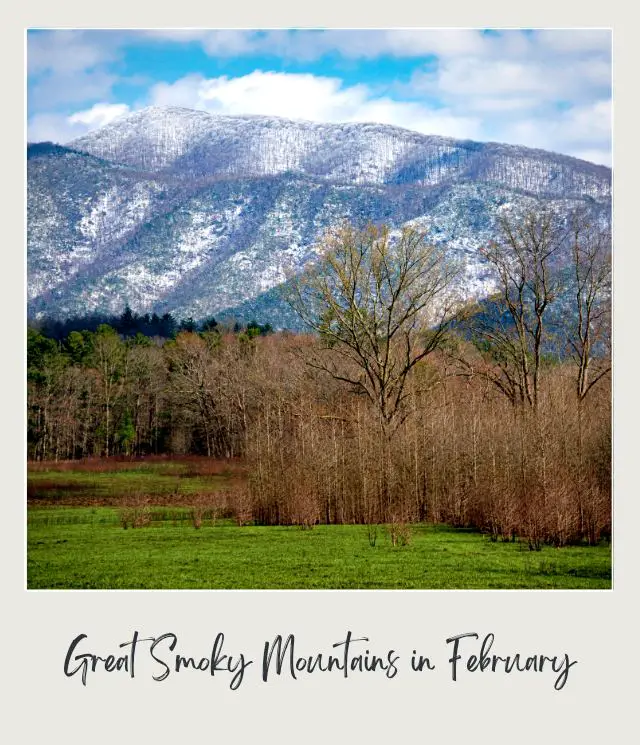Are you thinking about visiting Great Smoky Mountain National Park but aren’t sure what to expect when you want to go? Then this guide is for you.
I’m James and I’m a national park expert. In this guide, I’ll go through all you need to know about the Great Smoky Mountains National Park weather, and how it might affect your plans. I also look at other factors that can affect your visit like when the see the wildflowers in bloom, the best time to visit Smoky Mountains in fall for spectaculars color, and more.
‼️ This guide looks in detail at each month of the year. If you just want a quick snapshot of my thoughts on the best time to visit Great Smoky Mountains National Park, check out my Best Time to Go to Great Smoky Mountains National Park guide. ‼️
No time right now to see what to expect throughout the year when visiting Great Smoky Mountains National Park? Pin It and save it for later:
Smoky Mountain National Park – Spring (March – May)
If you’re thinking of visiting the Smoky Mountains in March to May, then that’s when spring occurs in this part of North Carolina and Tennessee. Spring here brings a mix of weather, from snow showers to warm sunshine. Read on to discover what this means on a month-by-month basis.
Visiting Great Smoky Mountains National Park in March
Go to Smoky Mountains National Park in March and you might see snow flurries. You can also experience fairly mild daytime highs. Snow is especially likely at higher elevations here, and in fact the same is true of rain at any time of the year. March is the wettest spring month, with over five inches of rain – or 10 days – on average.
In March, the lowest temperatures can be below freezing. Expect lows of around 27°F (-3°C), with daytime highs of about 54°F (12°C). So it can be very cold at night – or warm during the day. Layering is thus a good idea when you’re hitting the trails in March. Remember that these are averages, too, and it’s often much colder in the mountains than at lower elevations.
By the end of the month, particularly at lower levels, spring wildflowers are likely to be in bloom in March. This month is a good time to avoid the crowds, as late spring, summer and fall are busier here. Temperature wise, March and November are, on average, more-or-less the same.
Pros
- A quiet time to visit
- It can be warm at lower elevations
- Spring wildflowers may be in bloom at low elevations
Cons
- It can be freezing cold at night
- The weather can be unpredictable
- You’ll need to pack for all seasons
Visiting Great Smoky Mountains National Park in April
The Smoky Mountains weather in April brings warmer temperatures than in March, though again you can expect it to be colder in the mountains. You can also expect showers when visiting Smoky Mountains in April – around four inches of rain falls during the month.
Average temperatures in April range from lows of about 34°F (1°C) to highs of about 63°F (17°C). Remember that it’s likely to be a lot warmer in Gatlinburg than it is at Clingmans Dome, for example. So it may be below freezing up there, even when it’s a lot warmer closer to sea level.
As fall and summer are the most popular seasons to visit the Smokies, even April and May can be pretty peaceful here. You’re less likely to experience freezing temperatures in April than in March, especially if you stick to the lower elevations.
In terms of temperature, April and October are very similar. Spring wildflowers should also be in full bloom here by April. April brings around nine days of rain in the Smokies.
Pros
- It’s pretty peaceful in April
- A good time to see spring wildflowers
- Freezing temperatures are unlikely at lower elevations
Cons
- April showers can be a thing
- Higher elevations can be a lot colder
- You’ll still need a rain jacket and extra layer
Key Events in April
✳️ The Spring Wildflower Pilgrimage usually occurs in late April (depending on the weather)
Visiting Great Smoky Mountains National Park in May
Spend time among the Great Smoky Mountains in May and you can expect warmer temperatures. It can be slightly wetter than April, however, with around 4.5 inches of rain in May on average.
Daytime highs at the Smokies in May can reach around 70°F (21°C), with overnight lows dipping to about 43°F (6°C). So it can be pleasantly warm when hiking, but not yet too hot. Again, it’s colder at higher elevations, such as Clingmans Dome, than at lower-down locations – like Gatlinburg.
May temperatures in the Great Smoky Mountains are fairly similar to those in September, though the latter is generally slightly warmer. In general, it’s comfortable at this time of year, without it being too cold or hot, and fewer tourists mean it’s more peaceful than during the following summer and fall months.
An extra layer is still advisable in May, especially if you’ll be heading to higher elevations. The spring wildflowers can still be at their best now, particularly in early May. This month, 9 to 10 days of rain is average.
Pros
- The park is still relatively quiet
- You can still see lots of wildflowers
- Warmer, more spring-like temperatures
Cons
- Wetter weather than in April
- An extra layer is still a good idea
- It’s usually still very chilly in the mountains
Key Events in May
✳️ The Spring Wildflower Pilgrimage can occurs in early May (depending on the weather)
Great Smoky Mountains – Summer (June – August)
Come to the Great Smoky Mountains in summer and you can expect hot, humid and sometimes stormy weather. Visibility can also be affected by the famous haze at this time of the year. This is a good time to head for the mountains, as it’s warm but not as hot as lower down.
Visiting Great Smoky Mountains in June
The Smoky Mountains weather in June is warm to hot, depending on the weather and the elevation. This is the third-warmest month of the year, slightly cooler than July and August, but a couple of degrees warmer than September.
In June, expect temperatures to range from 50°F (10°C) to 75°F (24°C). Again it can be wet here, and the humidity can lead to the haze that the Smokies are named for. Expect around 10 days of rain in June, on average.
If it’s not too hot, humid or stormy, evenings tend to be very pleasant at the park in June. Bring a light rain jacket, though, as afternoon rain isn’t uncommon. Summer is a popular time to visit, though June can see less crowds than in July.
Pros
- The third-warmest month
- Pleasant evening weather
- Warm temperatures at high elevations
Cons
- Expect stormy afternoons
- Haze can affect visibility
- The park starts getting very busy
Visiting Great Smoky Mountains in July
The Smoky Mountains weather in July is similar to the weather in June, except it will be slightly hotter. This is the warmest month in this part of the US, though August temperatures are very similar.
During July in the Smokies, average minimums are around 55°F (13°C), while maximums can reach about 77°F (25°C). This is a wetter month than June, with about 10 days of rain in Gatlinburg and around 13 at Clingmans Dome.
July is a very busy time at the park, as it’s the peak of the summer tourist season. What’s good is that it’s warm even in the mountains, but on the negative side you can expect crowds.
Haze, high humidity and rainstorms are also to be expected when visiting the Great Smoky Mountains in July.
Pros
- Evenings are warm
- The hottest month of the year
- It’s warm, even up in the mountains
Cons
- Afternoon storms are fairly common
- Visibility can suffer due to the haze
- This is peak tourist season
Visiting Great Smoky Mountains National Park in August
August also brings hot weather to the lower elevations of Great Smoky Mountains National Park. Up at higher levels, it’s also warm, and the same generally applies during the evenings. 11 days of rain are average for August, though it’s wetter higher up.
Typical August temperatures in the Smokies range from 54°F (12°C) to 77°F (25°C). You can also expect haze, storms and humidity in August, though these begin to tail off at the end of the month and before fall season in the Smoky Mountains.
Visitor numbers are still high in August, though it’s not quite as busy as July. The park’s waterfalls are in full flow by now, following the summer rains of the last couple of months. There’s still plenty of natural daylight now for making the most of every waking hour, too.
Pros
- The weather is warm to hot
- There’s still long hours of daylight
- The second-hottest month of the year
Cons
- Visitor numbers remain high
- Expect haze, storms and humidity
- It’s too early for fall color in the Smoky Mountains
Great Smoky Mountains National Park in Fall (September – November)
If you want to see the Great Smoky Mountains fall colors, then you’re far from alone. Fall in the Smoky Mountains takes place during September, October and November. Read on to discover the best time to visit Smoky Mountains in the fall.
Visiting Great Smoky Mountains in September
Head to the national park in September, and you can expect temperatures that are cooler than June, but warmer than May. By the end of the month in the highlands, though, you might even see some frost and snow. Though the low country tends to stay warm until well into October.
Average temperatures in the Smokies in September are in the range of 48°F (9°C) to 72°F (22°C) – though of course it will be cooler at higher elevations and warmer lower down. Freezing temperatures are unlikely in early fall, except sometimes up in the mountains at night.
Is September the best time to visit the Smoky Mountains for fall colors? Not if you go early in the month – the weather is more summery, and not all of the leaves will have changed color by then. It’s a good time to enjoy the tail end of summer, though, with fewer crowds than during June, July and August. By the end of the month, you might see some trees clad in their fall colors.
September is also less humid and rainy than summer, with about 6 to 7 days of rain on average.
Pros
- Almost as warm as June
- Less rainfall than during summer
- Fewer visitors than in the preceding months
- Fall color at the higher parts of the park in late September
Cons
- A little early for fall colors in early September
- There may be snow and frost in the mountains
Key Events in September:
✳️ Smoky Mountains Fall Festival (formerly Oktoberfest) from late September to late October
Visiting Great Smoky Mountains October
The Smoky Mountains October weather is distinctly more fall-like than September. Head to the Great Smoky Mountains National Park in October if you want to see the Great Smoky Mountains National Park fall colors in all their glory, as they’re at their best from the end of September to late October.
What can you expect from the Great Smoky Mountains National Park weather in October? Temperatures ranging from 35°F (2°C) to 63°F (17°C) are average, though as usual it will be hotter lower down than in the highlands.
In terms of rainfall, October sees around 7 days of rain. In the mountains, there may also be traces of snow. Frost can also occur at high elevations in October.
Fall is a popular time to visit the Smokies. It can therefore be busy, but not as much as during the summer months.
Pros
- October is drier than the summer
- The fall colors are at their best this month
- Smoky Mountains Fall Festival runs throughout October
Cons
- The park can be busy due to fall colors and the festival
- Frost and snow are more likely in the highlands
Key Events in October:
✳️ Smoky Mountains Fall Festival (formerly Oktoberfest) from late September to late October
Visiting Great Smoky Mountains in November
Is November a good time to visit the Smoky Mountains? It can be a peaceful time of year at the park, with fewer tourists than in early fall, summer and late spring. Snow and frost are more commonplace at higher elevations now, but not so much as during the following winter months.
At Great Smoky Mountains National Park in November, you can expect average lows of about 27°F (-3°C), with temperatures rising to around 54°F (12°C) at most. So it’s chilly overnight, but can be mild during the day, especially in the lowlands.
The temperatures at the Smoky Mountains in November are comparable to those you’d experience in March. You may still see some fall colors early in the month, but by the end of November the trees may be bare.
This is a quiet time to visit the park, and warmer than the winter months of December, January and February. It’s still relatively dry, but you can expect about twice as much rain at Clingmans Peak than in Gatlinburg: at the latter expect around 7 wet days.
Pros
- It’s still relatively dry
- A tranquil time of year to visit
- The lowlands only have about 7 rainy days
Cons
- Expect freezing overnight temperatures
- Snow and frost are increasingly likely
- The fall colors may have all but disappeared
Key Events in November:
✳️ Smoky Mountains Winterfest runs between November and February
Great Smoky Mountains – Winter (December – February)
Head to the Smoky Mountains in winter and you might expect snow. However, the Great Smoky Mountains National Park in winter is almost a tale of two places – the lower elevations only tend to see occasional snow, while in the mountains snow storms are fairly common. You can also expect some warm, sunny days in some spots. Here’s the month-by-month breakdown.
Visiting Great Smoky Mountains in December
The Smoky Mountains weather in December is pretty much the same as what you can expect in February. At Great Smoky Mountains National Park in December, it’s cold, especially overnight and in the highlands.
If you’re wondering does it snow in the Smoky Mountains in December, then the answer is yes. This is far more likely in the mountains, though. Overnight temperatures are often well below freezing too. Around nine to ten days of snow or rain are average, though seeing snow in the lowlands is less common.
The Great Smoky Mountains National Park weather in December brings low temperatures in December of around 23°F (-5°C), with highs of about 46°F (8°C). So it’s freezing overnight, and can be pretty chilly during the day, too. Though it’s not unknown for temperatures to reach the 50s, and even occasionally the 70s (in Fahrenheit) by day.
Again, when it comes to the Smoky Mountains in December weather, snow and freezing temperatures are far more likely at altitude than down in the lowlands and locations like Gatlinburg.
Pros
- Smoky Mountains Winterfest runs between November and February December is milder than January
- You may see snow-capped mountains
- Some winter days can be as warm as 50 to 70°F
Cons
- Overnight temperatures can be very low
- Snowfall can affect access during early winter
Key Events in December:
✳️ Smoky Mountains Winterfest runs between November and February
Visiting Great Smoky Mountains National Park in January
Head to the Smokies in January and you’ll experience the chilliest month of the year. This is also when you’re most likely to see snow. Thick snow might cover the mountains, while in the lowlands you could also witness snowfall, but it’s likely to be much lighter and less frequent.
Around 10 days of precipitation, falling as rain or snow, is average for January in the Great Smoky Mountains. Some warm, sunny days are likely to occur in lower locations like Gatlinburg, with temperatures that can be surprisingly pleasant.
Though they may vary a lot from the average, typical January temperatures range from 19°F (-7°C) to 43°F (6°C). Again, though, you could experience days when the temperature exceeds 50°F (10°C) – or even 60°F (15°C) – at lower elevations.
Pros
- Expect snowy mountains
- It’s much milder at low elevations
- Daytime highs may still exceed 50°F in the lowlands
Cons
- The coldest month of the year
- Thick snow is likely to restrict access in some parts
Key Events in January:
✳️ Smoky Mountains Winterfest runs between November and February
Visiting Great Smoky Mountains National Park in February
Though it’s cold and snowy in the mountains, February is slightly milder than January. Temperatures are comparable to those of December, as are precipitation levels.
Averages across the park in February are in the range of 19°F (-7°C) to °43°F (6°C). Again, though, these are only averages, and it’s a lot colder at altitude than down on the ground.
As in the rest of winter, the mercury can, very occasionally, climb as high as 70°F (21°C) in February. Temperatures over 50°F (10°C) aren’t uncommon in places like Gatllinburg – though it will be a different story at spots like Clingmans Peak.
For lots of snow in the mountains and some chance of it in the lowlands, February is a good time to visit. The park is also very quiet at this time of the year.
Pros
- The park is very peaceful
- Thick snow may cover the mountains
- Warm, sunny days may occur in the lowlands
Cons
- It’s still very cold indeed at altitude
- The accumulation of snow may affect access
Key Events in February:
✳️ Smoky Mountains Winterfest runs between November and February
Travel Insurance for Great Smoky Mountains National Park
No matter when is the best time to go to Great Smoky Mountains National Park, you should definitely get travel insurance. This can protect you not only against medical and emergency repatriation, but can also cover things like trip cancellation, loss and/ or theft of property, etc.
➡️ A great insurance option is Travelex. It has coverage for all you’ll need. You can compare Travel Insurance plans here or get a quote right now:

Enjoy Great Smoky Mountains National Park!
More Planning Resources for Great Smoky Mountains National Park
⭐ Great Smoky Mountains National Park Guide
⭐ Planning A Trip to Great Smoky Mountains National Park: 7 Mistakes to Avoid
⭐ Best Hikes in Great Smoky Mountains National Park
⭐ How to Get to Great Smoky Mountains National Park
⭐ The Best Airports Near Great Smoky Mountains National Park
⭐ The Nearest Airport to Great Smoky Mountains National Park
⭐ Best Time to Visit Great Smoky Mountains National Park
⭐ 10 Tips For Visiting Great Smoky Mountains National Park
⭐ 10 Fun Facts about Great Smoky Mountains National Park
Which month did you decide to visit Smoky Mountains National Park? Join my private Facebook group National Parks Collectors and comment and let me know (you can also pick up extra planning tips, share your photos and stories with other national park lovers and more).
If you liked this guide, Pin It to your Great Smoky Mountains National Park board!
James Ian is a national park, camping and hiking expert.
He has dedicated his life to travel, visiting more than 80 countries, all 7 continents and most of the national parks in the United States. With over 35 years experience in the travel industry, James has worked on cruise ships, at resorts and hotels, and as a travel planner who’s helped hundreds of people plan successful trips to US national parks.
Based on his experience visiting our national parks multiple times, in-depth research and expertise as a travel planner, James has published detailed itineraries for many of the major national parks in the US. These itineraries, as well as in-depth park guides, and other resources will help you have your own incredible trip to US national parks without stress and hassle.
As a national park expert, James has contributed to many publications, including USA Today, Newsweek, Time Business News, Savoteur, Best Trip, and Wired.
Read more…
I’m a member of the Amazon Services LLC Associates Program. As an Amazon Associate I earn from qualifying purchases.
